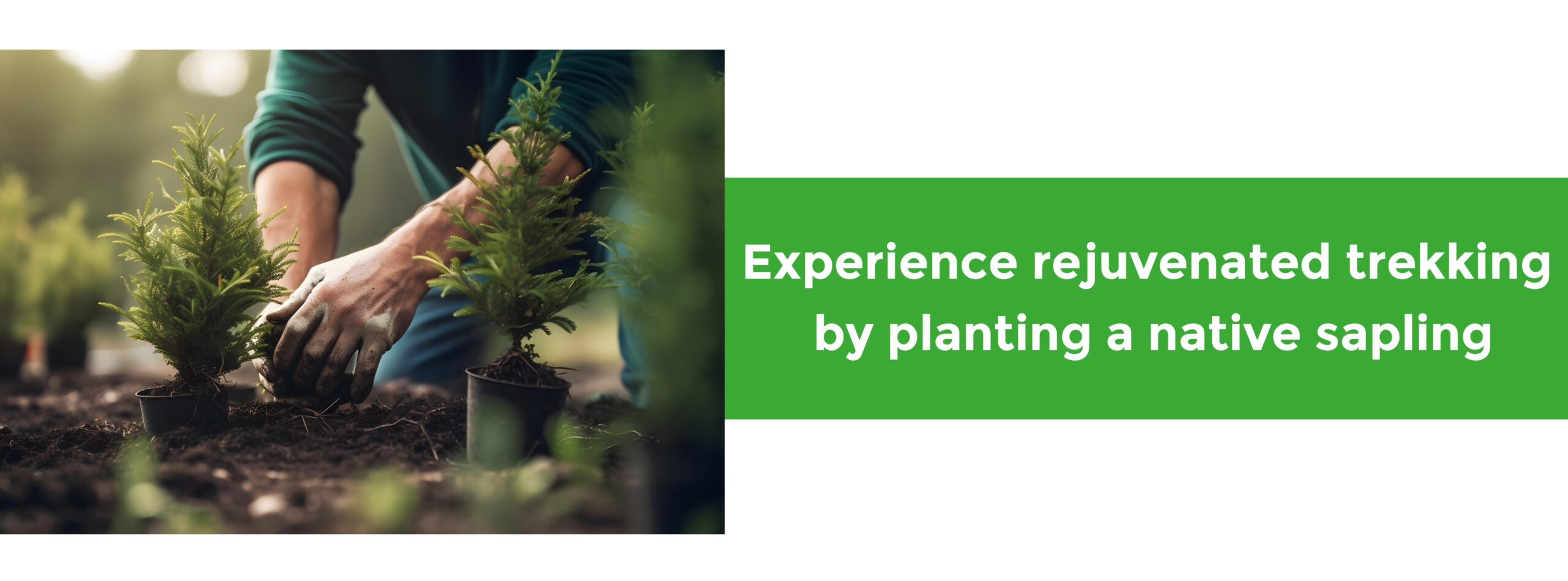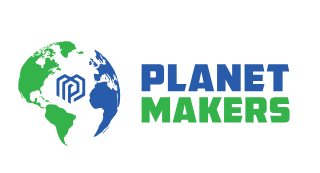
Opportunities for greener pastures
Global Warming and Climate Change are the most critical issues challenging the human race, small and effective actions can yield results and change the scenario. Result-oriented planning and action on the ground can change the future course of rebuilding the planet. With due consideration only in the area of afforestation, many actions are needed on a war footing basis.
Increasing afforestation can help to combat deforestation, mitigate the impacts of climate change, and improve biodiversity. Methods and measures to increase afforestation:
Governments can play a significant role in promoting afforestation by developing policies and programs that encourage tree planting. These policies can include incentives for landowners to plant trees, subsidies for tree-planting programs, and regulations to protect forests. Engaging local communities in tree planting programs can help to increase afforestation. This can involve providing training and support to local communities to plant and maintain trees and involving them in decision-making processes related to forest management.
Agroforestry is the practice of integrating trees into farmland. This can help to improve soil health, increase biodiversity, and provide additional sources of income for farmers. Reforestation involves planting trees in previously forested areas that have been cleared. This can help to restore degraded landscapes and improve biodiversity. Urban forestry involves planting trees in cities and towns to improve air quality, reduce urban heat islands, and provide other benefits. This can involve planting trees along roadsides, in parks, and on rooftops.
Private sector organizations, such as companies and non-governmental organizations, can also play a role in promoting afforestation. This can involve investing in tree planting programs, developing sustainable forestry practices, and promoting the use of wood products from sustainably managed forests.
Increasing afforestation requires a range of approaches, including government policies, community participation, agroforestry, reforestation, urban forestry, and private-sector engagement. By taking these approaches, it is possible to increase afforestation, mitigate the impacts of climate change, and improve biodiversity.
Highways as green centers
Every traveler is a potential tool to create afforestation, a simple and informal plan can yield effective results on the ground. Collaborating with the traveler and the corporate world through Corporate Social Responsibility can render effective results in afforestation and in generating employment amongst rural youth.
With green centers placed at restaurants on major highways, the traveler is convinced to plant a sapling at a designated location, this location is identified for large-scale plantation drives with involvement and participation from economically weak rural youth.
Fruit-based sapling drive
The selected saplings will mostly be fruit-based saplings like sapota, pomegranate, mango, or other type of fruits that will yield fruits in the coming years, these fruits will be a source of income or source of food for the nearby villagers.
Corporate Participation
Corporates can participate in the plantation drive to achieve their CSR objectives and responsibilities; their CSR responsibilities will collude with rural employment generation for economically weaker sections.
Corporates can select their plan and commit accordingly, the plans vary only on the time duration and the number of saplings earmarked for plantation.
With every corporate company committing to its CSR goals, its overall financial objectives under CSR would be thoroughly evaluated, the evaluation will be structured with an actionable plan on the ground. Plans are customized based on the objectives and commitment of the company.
Talk to us and share your CSR objectives
Name of the company: –
Contact Person’s name and number: –
Corporate Social Responsibilities goals & objectives: –
Financial obligations of the company under CSR: –
Lake rejuvenation and its methods
Lake rejuvenation involves restoring the ecological health of a lake that has become degraded due to pollution, sedimentation, and other factors. Lake rejuvenation requires a range of technical methods, including aeration, nutrient reduction, sediment removal, wetland creation, biomanipulation, phytoremediation, and bioremediation. By using these approaches, it is possible to restore the ecological health of degraded lakes and improve water quality. Some technical methods for lake rejuvenation are: –
Aeration involves adding oxygen to the water to improve water quality and reduce the growth of harmful algae and bacteria. This can be done by adding diffused air or mechanical devices that circulate the water.
Nutrients such as phosphorus and nitrogen can contribute to the growth of harmful algae and bacteria in lakes. Reducing nutrient inputs, such as agricultural runoff and sewage discharge, can help to improve water quality.
Excessive sedimentation can reduce the depth and quality of a lake. Removing sediment can help to restore the lake’s depth and improve water quality.
Wetlands can act as natural filters, improving water quality by removing nutrients and pollutants. Creating wetlands around the lake’s edges can help to improve water quality.
Biomanipulation involves manipulating the lake’s food web to reduce the growth of harmful algae and bacteria. This can be achieved by introducing predatory fish or removing planktivorous fish.
Phytoremediation involves using plants to remove pollutants from the lake. Plants such as water hyacinth and duckweed can absorb pollutants and nutrients from the water, improving water quality.
Bioremediation involves using microorganisms to remove pollutants from the lake. This can be done by introducing bacteria or other microorganisms that can break down pollutants.
Lake creation in water-scarce villages
Lakes can be created naturally or artificially. Natural lakes are formed by geological processes such as glacial action, volcanic activity, or tectonic movements. On the other hand, artificial lakes are created by humans for various purposes such as hydroelectric power generation, irrigation, recreation, and water supply. Some methods we adopt for lake creation and formation:-
Excavation: Lakes can be created by excavating soil and rock from the ground to create a depression that fills with water. This method is commonly used for recreational and ornamental purposes.
Natural Expansion: Lakes can naturally expand over time due to factors such as erosion and sedimentation. This can occur when a river or stream deposits sediment in a low-lying area, creating a natural dam that impounds water.
Artificial Filling: Lakes can also be created by artificial filling, where water is pumped or transported into a natural depression or an excavated basin.
Subsidence: Lakes can also be formed due to subsidence, which occurs when the ground sinks or collapses
Replenishing groundwater table
Replenishing the groundwater table is an essential step in ensuring the long-term sustainability of groundwater resources. We adopt these methods to replenish the groundwater table:
Collecting and storing rainwater is an effective way to recharge groundwater. This can be done through various methods such as rooftop rainwater harvesting, recharge pits, and check dams.
Artificial recharge involves creating structures such as recharge wells and boreholes to inject surface water into the ground to replenish the groundwater table.
Watershed management involves implementing measures to conserve and manage the natural resources in a watershed, such as forests, wetlands, and streams, to increase the availability of water for groundwater recharge.
Soil conservation practices such as contour farming, terracing, and cover cropping can help reduce soil erosion and increase the infiltration of water into the ground, which can increase groundwater recharge.
Reducing groundwater extraction by limiting the amount of groundwater extracted which can help maintain or increase the groundwater table. This can be done through the implementation of water conservation measures and the use of alternative water sources.
Treated wastewater can be used for various purposes such as irrigation, industrial processes, and groundwater recharge, which can reduce the demand for freshwater and increase the availability of water for groundwater recharge.
Groundwater banking involves storing excess surface water in underground aquifers for later use during periods of low rainfall or drought.
It is important to note that the specific methods used to replenish the groundwater table will depend on the unique hydrogeological conditions of the area in question, as well as the local laws and regulations governing groundwater use. Therefore, it is recommended to seek the guidance of a qualified hydrogeologist or groundwater management expert when planning and implementing groundwater recharge activities.
Groundwater is an important source of freshwater and is essential for meeting the needs of many communities around the world. Harnessing groundwater involves the sustainable management and use of this resource to meet the water needs of a community or region. Here are some general steps that can be taken to harness groundwater:
Conduct a hydrogeological study by assessing the geological and hydrological characteristics of the area to determine the location, depth, and quality of the groundwater resource. This information is essential for identifying potential groundwater sources and determining the appropriate methods for extracting and utilizing groundwater.
Install wells makes the process easier and more effective. Once potential groundwater sources have been identified, wells can be drilled or dug to extract the groundwater. The type of well and the depth at which it is installed will depend on the hydrogeological conditions of the area.
Monitoring groundwater levels is important to ensure that the resource is being used sustainably and to avoid over-extraction. This can be done using simple tools such as dipwells, or more advanced techniques such as remote sensing.
Implement water conservation measures to replenish the Groundwater resources, it should be used efficiently and effectively to ensure their long-term sustainability. Water conservation measures such as rainwater harvesting, water reuse, and water-efficient practices can help reduce the demand for groundwater.
Groundwater resources should be managed in a sustainable manner, which involves balancing the needs of water users with the need to protect the resource for future generations. This can be done through effective governance, regulation, and management practices.
The specific steps involved in harnessing groundwater will depend on the unique hydrogeological characteristics of the area in question, as well as the local laws and regulations governing groundwater use.
Pond creation and Lake rejuvenation – A PlanetMakers initiative
Many villages in Mysore and Mandya districts are facing acute water shortages, the shortage of drinking water is adding to the villager’s woes, and the administration every year works hard to meet the demands of their drinking water shortage.
Creating water ponds for livestock and water resource for these villagers can impact their lives in a big way. PlanetMakers has taken up the initiative to create ponds in these villages in collaboration with the local administration and government authorities.
Some of the villages that are affected by severe water shortage are:- Jattihundi, Ramanahundi, Mooganahundi, Anagalli, Sahukarhundi, Maatikyathanahalli, Shattanayakanahalli, Berihundi in Mysuru taluk; Kalegowdanakoppalu, Dasarakoppalu, Kalmandi and Modalu villages of Hunsur taluk; and Kakkanahatti, Karyapura, Hanumappanahundi, and Gattipura in Nanjangud taluk.
Villages that are worst affected by water shortage are:-
Mandya district also has its water woes, some of its villages are severely affected by water shortage. The worst affected villages are Dudda, Keregodu, Basaralu, Doddakothagere, Mole, Chakanahalli, Shivapura, Challanayakanahalli, Kikkeri, Kallanakere, Sasalu, Sollepura, Lakshmipura, Manganahosahalli, Kodimaranahalli, Ummadahalli, Dinka, and Ainorahalli where residents standing before dry taps are a routine affair.
Chikkaballapur district also has a few taluks and villages that are affected by water shortage.
Deva Reddypalli village in Bagepalli taluk is the most affected village that is coping with the water shortage problem.
Chikkamagalur –
Chikkamagaluru, Koppa, Kadur, NR Pura, and Tarikere are some taluks that have a history of water shortage problems.
PlanetMakers is currently focusing on these villages to eradicate their woes with water. The team has identified locations to develop ponds and lakes for immediate need and sustenance.
Donations and Volunteers are invited to take up work related to the creation of ponds and water resources in these villages.
Interested Companies, People, and Volunteers can share their details. Corporations can consider this activity under their Corporate Social Responsibility (CSR) and avail of tax exemptions.
Name of the company:-
Contact details:-
Name of the Volunteer:-
Contact details:-
